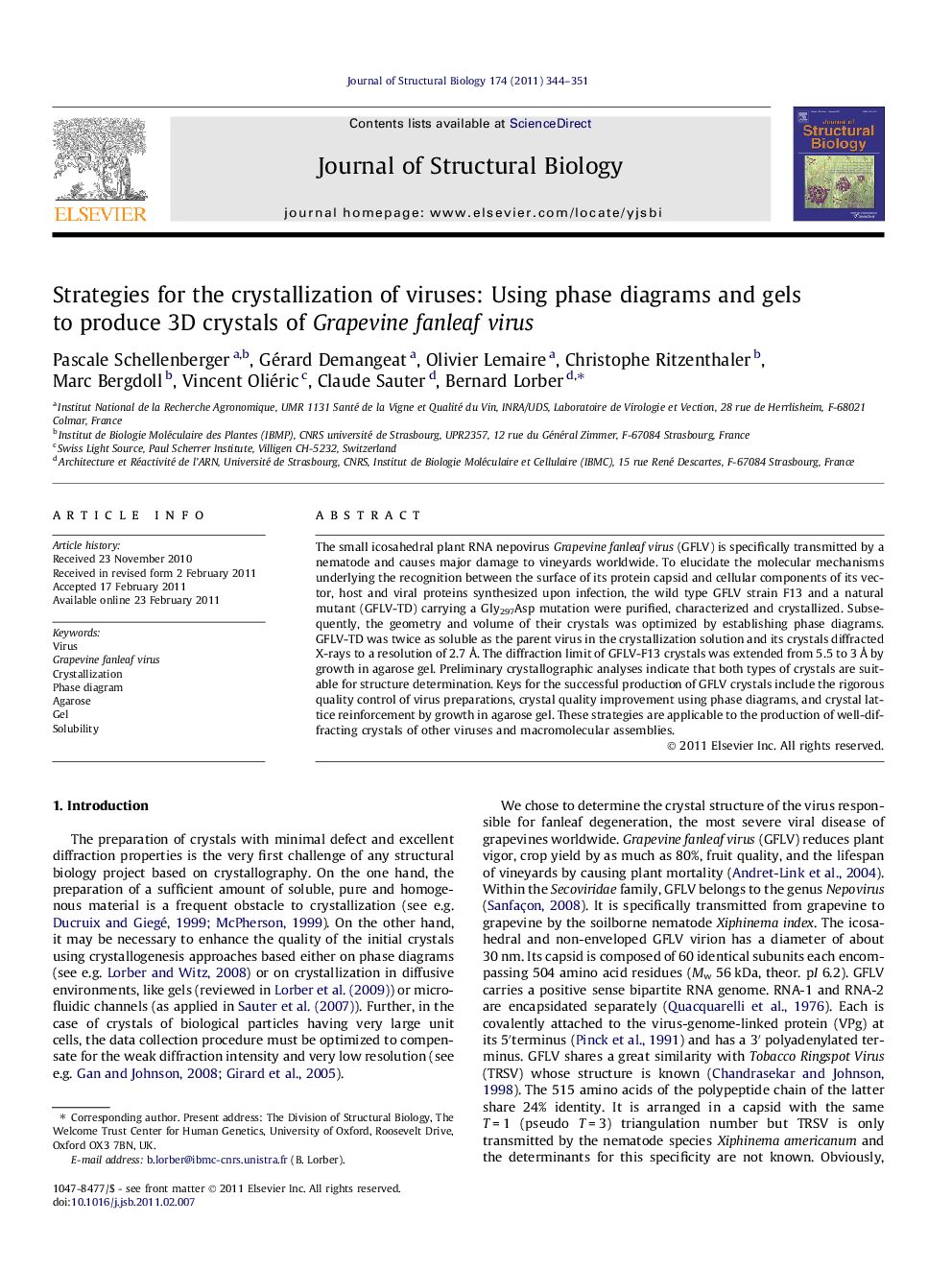| Article ID | Journal | Published Year | Pages | File Type |
|---|---|---|---|---|
| 2828795 | Journal of Structural Biology | 2011 | 8 Pages |
The small icosahedral plant RNA nepovirus Grapevine fanleaf virus (GFLV) is specifically transmitted by a nematode and causes major damage to vineyards worldwide. To elucidate the molecular mechanisms underlying the recognition between the surface of its protein capsid and cellular components of its vector, host and viral proteins synthesized upon infection, the wild type GFLV strain F13 and a natural mutant (GFLV-TD) carrying a Gly297Asp mutation were purified, characterized and crystallized. Subsequently, the geometry and volume of their crystals was optimized by establishing phase diagrams. GFLV-TD was twice as soluble as the parent virus in the crystallization solution and its crystals diffracted X-rays to a resolution of 2.7 Å. The diffraction limit of GFLV-F13 crystals was extended from 5.5 to 3 Å by growth in agarose gel. Preliminary crystallographic analyses indicate that both types of crystals are suitable for structure determination. Keys for the successful production of GFLV crystals include the rigorous quality control of virus preparations, crystal quality improvement using phase diagrams, and crystal lattice reinforcement by growth in agarose gel. These strategies are applicable to the production of well-diffracting crystals of other viruses and macromolecular assemblies.
